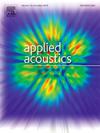累积残差模糊色散熵及其多尺度版本:舰船目标信号特征提取方法、验证及应用
IF 3.4
2区 物理与天体物理
Q1 ACOUSTICS
引用次数: 0
摘要
在量化舰船目标信号特征复杂性时,现有的熵方法往往存在精度低、鲁棒性不足、可靠性不足等问题。针对上述挑战,本研究提出了一种新的熵指标,即累积残差模糊色散熵(CRFuzDisEn)及其多尺度扩展,即时移多尺度CRFuzDisEn (TMCRFuzDisEn)。其目的是克服传统熵方法在分析具有噪声干扰的非平稳舰船目标信号时所遇到的局限性。通过累积残差概率、模糊隶属函数和多尺度分析,CRFuzDisEn可以有效量化信号复杂度,同时保持良好的抗噪性。通过综合信号和实测舰船目标数据的验证,与离散熵和模糊离散熵相比,CRFuzDisEn的分类准确率提高了13.43%。与其他多尺度模式相比,TMCRFuzDisEn的分类准确率提高了46.18%。结果表明,本文提出的方法在舰船目标识别领域具有优异的性能。本文章由计算机程序翻译,如有差异,请以英文原文为准。
Cumulative residual fuzzy dispersion entropy and its multiscale version: methodology, validation and application of feature extraction for ship target signals
When quantifying the complexity of ship target signal features, the existing entropy methods often encounter problems like low accuracy, insufficient robustness, and lack of reliability. In addressing the aforementioned challenges, this research puts forward a novel entropy index, namely the cumulative residual fuzzy dispersion entropy (CRFuzDisEn), along with its multiscale extension, the time-shift multiscale CRFuzDisEn (TMCRFuzDisEn). The aim is to overcome the limitations encountered by traditional entropy methods when analyzing non-stationary ship target signals with noise interference. By integrating cumulative residual probability, fuzzy membership functions, and multiscale analysis, CRFuzDisEn can effectively quantify the signal complexity while maintaining remarkable noise resistance. Verified by synthetic signals and measured ship target datasets, compared with dispersion entropy and fuzzy dispersion entropy, the classification accuracy of CRFuzDisEn is increased by 13.43%. And compared with other multiscale patterns, the classification accuracy of TMCRFuzDisEn is improved by 46.18%. Evidently, the method proposed in this research demonstrates outstanding performance in the area of ship target recognition.
求助全文
通过发布文献求助,成功后即可免费获取论文全文。
去求助
来源期刊

Applied Acoustics
物理-声学
CiteScore
7.40
自引率
11.80%
发文量
618
审稿时长
7.5 months
期刊介绍:
Since its launch in 1968, Applied Acoustics has been publishing high quality research papers providing state-of-the-art coverage of research findings for engineers and scientists involved in applications of acoustics in the widest sense.
Applied Acoustics looks not only at recent developments in the understanding of acoustics but also at ways of exploiting that understanding. The Journal aims to encourage the exchange of practical experience through publication and in so doing creates a fund of technological information that can be used for solving related problems. The presentation of information in graphical or tabular form is especially encouraged. If a report of a mathematical development is a necessary part of a paper it is important to ensure that it is there only as an integral part of a practical solution to a problem and is supported by data. Applied Acoustics encourages the exchange of practical experience in the following ways: • Complete Papers • Short Technical Notes • Review Articles; and thereby provides a wealth of technological information that can be used to solve related problems.
Manuscripts that address all fields of applications of acoustics ranging from medicine and NDT to the environment and buildings are welcome.
 求助内容:
求助内容: 应助结果提醒方式:
应助结果提醒方式:


